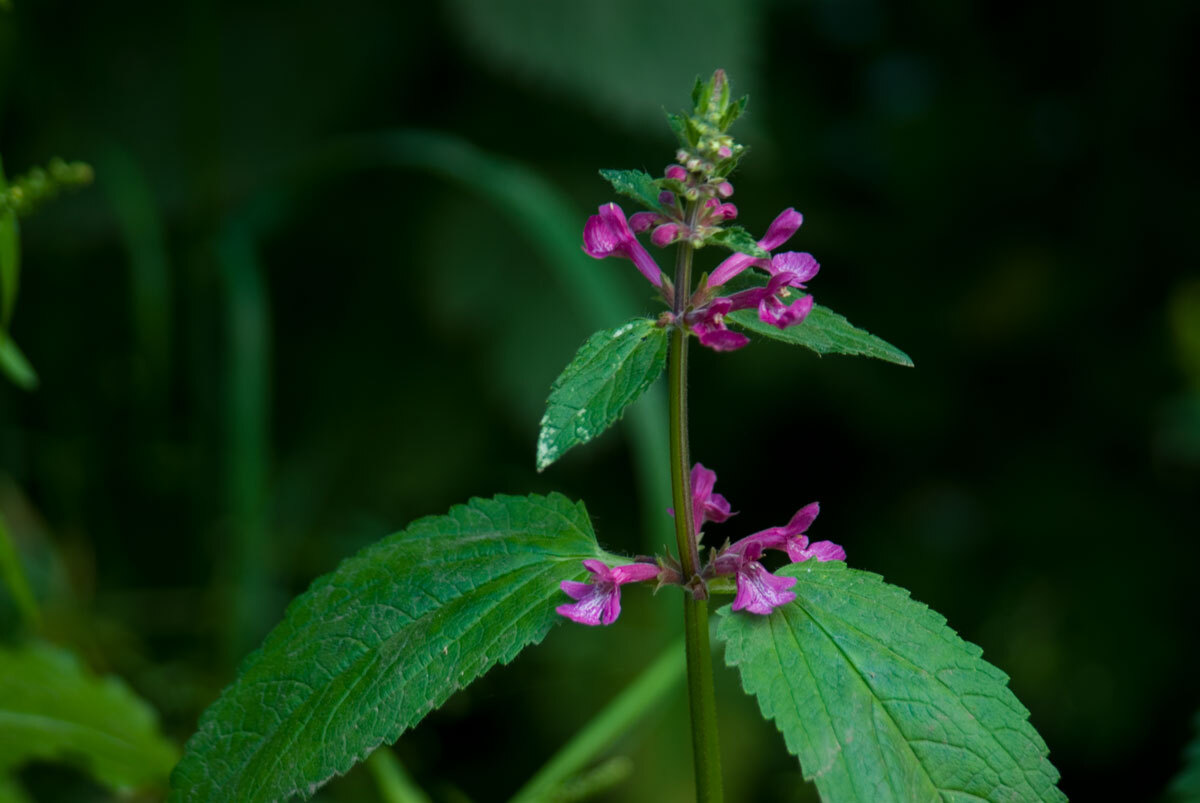
Hedge nettle, also known as Stachys, is a fascinating plant with a rich history and many uses. Did you know that this plant has been used in traditional medicine for centuries? Its leaves and stems are known for their anti-inflammatory properties. But that's not all—hedge nettle is also a favorite among pollinators like bees and butterflies. In addition, it can thrive in various environments, from woodlands to gardens. Curious about its benefits? This plant can even help improve soil health by preventing erosion. Whether you're a gardener, a nature enthusiast, or just someone who loves learning about plants, hedge nettle offers something intriguing for everyone. Let's dive into 26 amazing facts about this versatile plant!
What is Hedge Nettle?
Hedge nettle, also known as Stachys, is a fascinating plant with a rich history and unique characteristics. Let's dive into some intriguing facts about this often-overlooked herb.
-
Hedge nettle belongs to the mint family. Despite its name, it isn't related to stinging nettles. Instead, it shares a family with mint, basil, and lavender.
-
The plant has a square stem. Like many members of the mint family, hedge nettle's stem is distinctly square-shaped, making it easy to identify.
-
It produces small, tubular flowers. These flowers can be pink, purple, or white and are often arranged in dense clusters.
-
Hedge nettle is native to Europe and Asia. It thrives in temperate climates and can often be found in woodlands, meadows, and along roadsides.
Historical Uses of Hedge Nettle
Throughout history, hedge nettle has been used for various purposes, from medicine to folklore.
-
Ancient Greeks used it for medicinal purposes. They believed it could treat wounds, respiratory issues, and digestive problems.
-
Medieval herbalists valued hedge nettle. They used it to create remedies for headaches, fevers, and even snake bites.
-
It was believed to ward off evil spirits. In some cultures, hedge nettle was hung in doorways to protect homes from malevolent forces.
-
Used in traditional Chinese medicine. Known as Xiang Ru, it was used to treat colds, fevers, and digestive issues.
Hedge Nettle in Modern Medicine
Even today, hedge nettle continues to be recognized for its potential health benefits.
-
Contains anti-inflammatory properties. The plant has compounds that can help reduce inflammation in the body.
-
Rich in antioxidants. These help protect cells from damage caused by free radicals.
-
May aid in digestion. Some studies suggest that hedge nettle can help soothe digestive issues like bloating and gas.
-
Potential to lower blood pressure. Preliminary research indicates it might help reduce hypertension.
Growing Hedge Nettle
Interested in adding hedge nettle to your garden? Here are some tips for growing this resilient plant.
-
Prefers moist, well-drained soil. Hedge nettle thrives in soil that retains moisture but doesn't become waterlogged.
-
Grows well in partial shade. While it can tolerate full sun, it prefers a bit of shade, especially in hotter climates.
-
Can be propagated by seeds or cuttings. Both methods are effective, making it easy to grow more plants.
-
Attracts pollinators. Bees and butterflies are particularly fond of hedge nettle flowers.
Fun Facts About Hedge Nettle
Beyond its practical uses, hedge nettle has some fun and quirky aspects.
-
Also known as woundwort. This name comes from its historical use in treating wounds.
-
Has a slightly minty smell. When crushed, the leaves emit a mild minty aroma.
-
Can grow up to three feet tall. Despite its name, hedge nettle can reach impressive heights.
-
Deer-resistant plant. Deer tend to avoid hedge nettle, making it a good choice for gardens in areas with high deer populations.
Environmental Impact of Hedge Nettle
Hedge nettle plays a role in its ecosystem, benefiting both plants and animals.
-
Helps prevent soil erosion. Its roots help stabilize the soil, reducing erosion in areas where it grows.
-
Provides habitat for insects. Many small insects use hedge nettle as a shelter and food source.
-
Can be used in natural pest control. Some gardeners plant hedge nettle to deter pests from other plants.
Culinary Uses of Hedge Nettle
While not as common as other herbs, hedge nettle can be used in cooking.
-
Leaves can be used in teas. They add a mild, minty flavor to herbal teas.
-
Edible flowers. The flowers can be used as a garnish or added to salads for a pop of color.
-
Can be used in soups and stews. The leaves add a subtle flavor and can be used similarly to other herbs like mint or basil.
Final Thoughts on Hedge Nettle
Hedge nettle, often overlooked, packs a punch with its medicinal properties and unique characteristics. This plant, found in woodlands and hedgerows, has been used for centuries to treat wounds, infections, and digestive issues. Its square stems and hairy leaves make it easy to identify, while its pink or purple flowers add a splash of color to the landscape.
Whether you're a nature enthusiast or someone interested in herbal remedies, hedge nettle offers something valuable. Its antibacterial and anti-inflammatory properties make it a natural choice for home remedies. Plus, it's a great plant for pollinators, supporting bees and butterflies.
Next time you're out for a walk, keep an eye out for this versatile plant. You might just find a new appreciation for the humble hedge nettle.
Was this page helpful?
Our commitment to delivering trustworthy and engaging content is at the heart of what we do. Each fact on our site is contributed by real users like you, bringing a wealth of diverse insights and information. To ensure the highest standards of accuracy and reliability, our dedicated editors meticulously review each submission. This process guarantees that the facts we share are not only fascinating but also credible. Trust in our commitment to quality and authenticity as you explore and learn with us.
